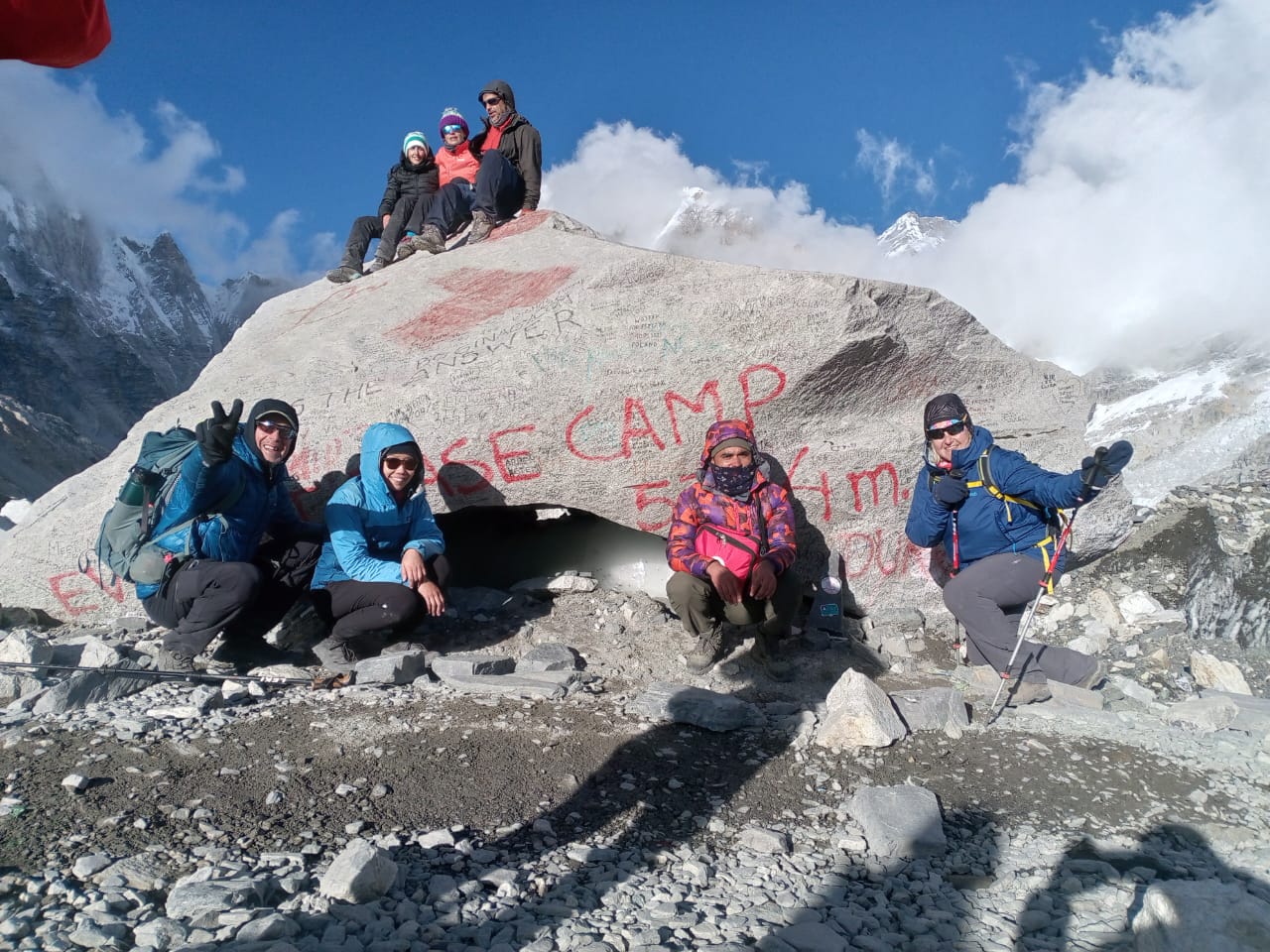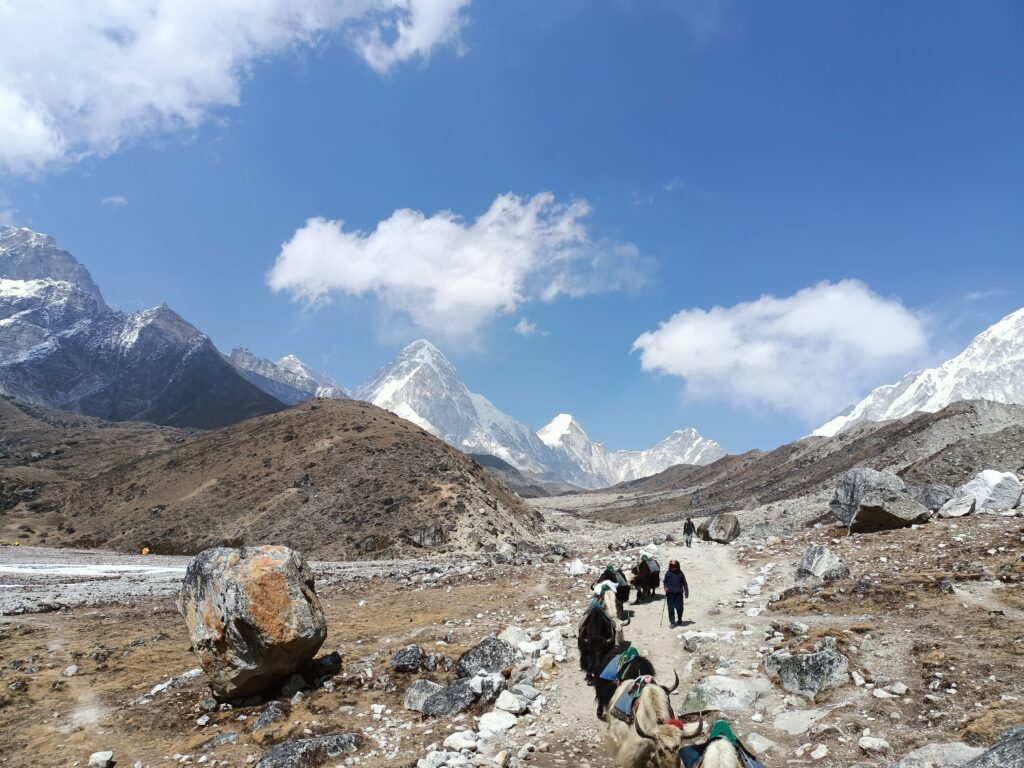
Renowned in the world for the majestic height of Everest, trekking in the world’s highest base camp is like a dream destination for many people. The breathtaking views of the mountain peaks and the perfect landscape will give an unparalleled experience.
The Everest Base Camp Trek will be a lifetime experience that will be in your memory forever. Exploring the endangered species of plants and animals in the Sagarmatha National Park offers a profound connection with nature’s beauty and fragility. Also, you can immerse yourself in the rich cultural and religious heritage of the mountain region and add more meaning to this remarkable adventure.
Despite being an adventure, this trek poses several challenges that you need to consider before embarking on this journey. With the right rear planning and proper fitness, you can easily handle the challenge that comes during the trek. So to make it easier we have written this blog to give you some knowledge and tips regarding the permit and season.
So let’s dive into the details about the permit and the season in more detail.
Permit Required For the Everest Base Camp Trek
Sagarmatha National Park Entry Permit
Everest Base camp lies inside the Sagarmatha National Park so every trekking in the Everest Region needs to have this permit. The cost of the permit for foreign trekkers is NPR. 3,000 per person + 13% VAT. For the SAARC nations, it will cost you 1,500 per person +13% VAT. For locals, it will cost you NPR. 100 per person +13% VAT.
Note: Children under 10 who want to trek EBC don’t need to pay the permit cost however the process of getting a permit is similar to the adult.
Khumbu Pasang Lhamu Municipality Entry Permit
After replacing the TIMS Card the government of Nepal started implementing this new permit on October 1, 2018. The cost of the Khumbu Lhamu Municipality Permit will cost you NPR. 2,000 per person. Children under the age of 10 can get this permit free of cost.
Optional Permit | Gaurishankar Conservation Area Permit
If you take another route which is from Jiri to EBC then you need to have this permit. The cost of the Gaurishankar Conservation Area Permit will cost you NPR. 3,000 per person.
Everest Base Camp Trek Peak Season
Spring season(March to May)

Spring is widely popular and considered the best season for trekking in the world-famous Everest Base camp. You can expect thousands of trekkers heading for the Everest base camp and other regions of the Everest. Due to suitable temperature, minimal perception of rainfall, and stable weather conditions many trekkers choose to trek during the month of Spring.
Also, with a clear view of the sky, less wind speed, and perfect visibility of the surrounding you can get a jaw-dropping view of the mountain peaks and the surroundings. During the spring from early March, you can see the blossom of rhododendron flowers in the high-altitude forest areas adding beauty to the trail path.
Autumn Season(September to November)
Autumn which spans from September to November is another popular season for the trekkers to trek in the Everest Base Camp. With moderate temperatures, a clear view of the sky, and less perception of rainfall many trekkers love to trek in Autumn season. Apart from the stable weather conditions, the big festivals of Nepal (Dashian and Tihar) also occur in this season. Trekkers will not only get the chance to immerse in the natural beauty but also explore the Nepali culture and traditions.
Everest Base Camp Trek Off-Season
Winter Season (December to February)
In Nepal, winter spans from December to February, which is considered the off-season. However, it is still possible to trek during these months. The temperature can be below -15 degrees celsius so if you are planning to trek then we suggest you have the right clothes and gear before embarking on this journey. The extreme cold temperature, strong cold wind, and heavy snowfall can pose several risks so you need to be very cautious during trekking in winter.
Monsoon/Summer Season(June to August)
The monsoon which spans from June to August is considered as challenging as well as dangerous due to heavy rainfall. High humidity, unpredictable weather conditions, landslides, flash floods, and risk of avalanches suggest not to trek during this summer season. Also, the active blood-sucking parasites such as leeches and mosquitoes can give you trouble during the trek.
Final Say
Trekking in the Everest base camp and watching the world’s highest mountain in the world by own eyes is the dream for many trekkers. Many trekkers around the globe have successfully done this trek whether they are children, adults, or the elderly. To watch the glorious view of the mountain, trekkers should make the proper plan and preparation and trek only through the registered trekking agencies from Nepal.
The breathtaking adventurous journey is waiting for you so to book the trek you can either book from our website or contact us via WhatsApp. We are here to provide you with any assistance that you require for this trek.




